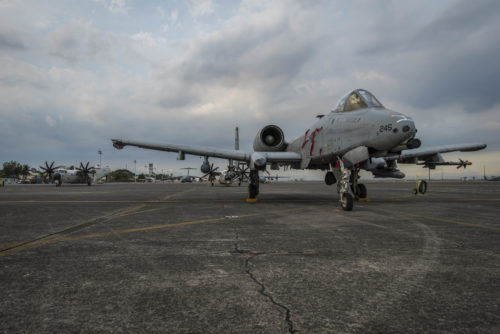The United States Air Force is preparing to withdraw its fleet of A-10 Thunderbolt II aircraft from Osan Air Base in South Korea, marking a significant shift in its military strategy in the region. The 25th Fighter Squadron, nicknamed the “Assam Draggins”, has been stationed at Osan AB since 1982, playing a crucial role in maintaining peace on the Korean peninsula. However, as part of a sweeping modernisation effort, the A-10s will be phased out by the end of fiscal year 2025.

The withdrawal will see all 24 A-10s currently stationed at Osan AB removed from service in South Korea. This move is part of a larger strategy by the US Air Force to transition towards more advanced aircraft, including upgraded F-16 Fighting Falcons, F-35 Lightning IIs, and F-15EX Eagle IIs. Lt. Gen. David Iverson, Seventh Air Force commander and U.S. Forces Korea deputy commander, highlighted the rationale behind this change: “By introducing advanced fourth and fifth-generation aircraft like our upgraded (F-16 Fighting Falcons), along with (F-35 Lightning IIs) and (F-15EX Eagle IIs) in the Pacific region, we are significantly enhancing our overall air combat capabilities in the Korean theater.”
These new aircraft bring a suite of advanced capabilities to the table. The upgraded F-16s boast enhanced survivability and weapon accuracy, while the F-35’s stealth technology and advanced sensors offer superior situational awareness and strike precision. The F-15EX, renowned for its avionics and payload capacity, will further bolster air-to-air and air-to-ground combat effectiveness.
Despite the withdrawal of the A-10s, the U.S. remains steadfast in its commitment to South Korea’s security. The Air Force emphasizes that this modernization effort will strengthen combined defence capabilities and enhance interoperability with the Republic of Korea Air Force. Currently, Seventh Air Force is conducting a “Super Squadron” test at Osan AB, utilizing F-16s to evaluate the effectiveness of larger squadrons in maximizing combat capabilities. This initiative reflects the U.S.’s dedication to adapting its forces to meet the evolving security challenges of the 21st century.
Lt. Gen. Iverson concluded, “The advancement of our F-16 upgrades and innovation through our ongoing super squadron test at Osan (AB) show our dedication to evolving and adapting our forces to meet the demands of the 21st century. We will continue to deliver overwhelming, unmatched combat airpower, ensuring that our defenses remain effective in safeguarding peace and security in the Indo-Pacific.” The retirement of the A-10s from South Korea marks the end of an era, but it also signifies the beginning of a new chapter in the US’s commitment to regional security, underpinned by advanced technology and a continued partnership with South Korea.
For more information, hit the Source below
We need more A-10S released to museums and park display. That is the best way to honor them.
Keep your reserves flying whenever you can.